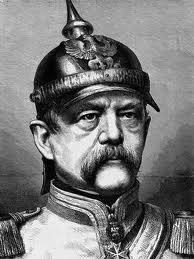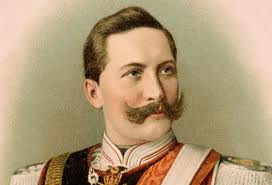Wednesday, November 30, 2011
German Music, Dance, and Theater 1901- 2000
MUSIC:
In the beginning of the twentieth century opera was popular. Some popular German composers were Kurt Weill (1900 – 1950), Paul Hindemith (1895 – 1963), Carl Orff (1895 – 1982), and Karl Amadeus Hartmann (1905 – 1963).
Carl Orff's Carmina Burana (popular scenic cantata) - http://www.youtube.com/watch?v=QEllLECo4OM (1:22)
 |
| Carl Orff |
Once the Nazi party came to power many German composers went to the United States including Schoenberg, Hindemith, and Erich Korngold. The Nazi's destroyed any music they felt had to do with Jews, Communists, jazz, or anything else they deemed 'dangerous'. When world war two ended musicians were subjected to denazification.
In the 60's and 70's the Darmstadt New Music Summer School had a large influence on music and modernization in West Germany. A few of the famous composers who had attended this school were Karlheinz Stockhausen and Hans Wener Henze. In East Germany they were told to avoid the ways of West Germany and follow a more social realistic approach.
The largest summer festival for classical music in Germany is the Schleswig-Holstein Musik Festival. Held every summer in the state of Schleswig-Holstein and was founded in 1986 by the German Pianist Justus Frantz. Each year the festival has a different country focus. In 2007 the focus was Hungary, in 2008 Russia, in 2009 Germany(home land), and in 2010 the focus was Poland.
Clip: Music is the life and blood of Germany. Most of the famous musicians and composers, over the ages have been from Germany. The German musical legacy holds the tunes of Ludwig van Beethoven, Johann Sebastian Bach, Franz Schubert, Johannes Brahms, Richard Wagner and many more. Wagner, Strauss, Mendelssohn Bartholdy, Brahms, Schumann, Handel, Telemann etc. are some of the composers of international repute, hailing from Germany.
With around one hundred and forty one professional orchestras, the country has the fifth largest music market in the world. Some of the famous orchestras in Germany are - the Gewandhaus Orchestra in Leipzig, Berlin and Munich Philharmonic orchestras etc.
From classical to romantic, pop to rock, Germany shines as a pearl in the western music scenario. End Clip. <http://www.asiarooms.com/en/travel-guide/germany/culture-of-germany/music-and-dance-in-germany.html> November 29th, 2011.
DANCE:
Dance is very popular in Germany and plays a large part in the German culture itself. Dance has been part of the culture since the beginning. Germany is well known for their performing arts. There are many freelancers and choreographers performing within and outside of the country constantly. Germany has over two-hundred fifty ballet companies and over sixteen-hundred dancers that are employed by theaters.
German dance is dominated by traditional classical dance along side of modern expression. Traditional dance would follow more ballet style where as expressionist dance would be more “Tanztheater”. “Tanztheater” is a style of dancing which originated from the actual Tanztheater that started with expressionist dance in the twenties and became the political street theater in the sixties. Some skilled dancers of the “Tanztheater” dance form are Johann Kresnik and Sasha Waltz from Berlin and Pina Bausch of Wuppertal. Folk dance is also popular in Germany.
Currently, for the younger generation dance clubs are popular. Most traditional dancing is not followed in the clubs, but rather a modern combination of dances (hip hop, techno, jazz, salsa etc.).
Possible example of Tanztheater style dancing? <http://www.youtube.com/watch?v=qIyNy15yhv4&feature=autoplay&list=PL0FF7E71186DAC99C&lf=results_main&playnext=2> November 30th, 2011
Popular Dance Clubs in Berlin, Germany:
Kit Kat Klub
Knaack Klub
Sage Club
Watergate
Havanna
SO 36
Berghain
Folk Dances:
Ländler- Clip: is a dance for couples which strongly features hopping and stamping. It was sometimes purely instrumental and sometimes had a vocal part, sometimes featuring yodeling. The Broadway musical and later film The Sound of Music features a scene where the protagonists Maria and Captain von Trapp dance a ländler; however, it is not a traditional but a choreographed form. End Clip <http://en.wikipedia.org/wiki/Ländler> November 30th, 2011
Schuhplattler – Originated in Upper Bavaria and originally had no rules but later was performed in 3/4 time with a series of jumps and hip movements to the beat of the music. Now it is usually performed out of tradition.
Waltz – Ballroom and folk dance combined possibly originating in Augsburg in the sixteenth century.
 Popular Ballets:
Popular Ballets:Berlin State Ballet (German Staatsballett Berlin)- created in 2004 by merging three ballet companies when the city was going through financial problems. One of the largest ballet companies in Europe with almost 90 dancers
Hamburg Ballet (Hamburg State Opera Ballet) – Located in Hamburg, Germany and since 1973 it has been directed by the American dancer and choreographer John Neumeier.
Stuttgart Ballet– First major German ballet that gains its popularity in the 1960's. Clip: The company, which is renowned for presentations of full-length narrative ballets including Romeo and Juliet, Eugene Onegin, The Taming of the Shrew, John Neumeier's ''Die Kameliendame and Streetcar Named Desire, continues to be defined critically as one of the world's best ballet theatres for its combination of classical, story and new modern ballets. End Clip <http://en.wikipedia.org/wiki/Stuttgart_Ballet> November 30th, 2011
Popular Choreographers:
THEATER:
Theater has always played a large role in German culture. It currently plays such a large role that around 150 theaters receive government funding. Some of these funded theaters house music, dancing, and plays. In addition to the 150 government funded theaters Germany has almost 280 private theaters of different sizes, histories, and traditions. Some historical reasoning as to why there are so many theaters has to do with Clip: when the country was divided among many royal houses, each court had a theater as a status symbol. The educated middle-class elite identified with it as well. End Clip <http://www.dw-world.de/dw/article/0,,3871070,00.html> November 30th, 2011.
 The smallest theater Germany has is the Theader in Freinsheim located in the state of Rhineland-Palatinate seating twenty guests and stage room for four actors. While one of the largest theaters Germany has is the Deutsche Theater in Berlin which seats 1,600 guests and puts on more than 300 shows every year.
The smallest theater Germany has is the Theader in Freinsheim located in the state of Rhineland-Palatinate seating twenty guests and stage room for four actors. While one of the largest theaters Germany has is the Deutsche Theater in Berlin which seats 1,600 guests and puts on more than 300 shows every year.Nazi's:
Once the Nazi's were under control many directors and actors fled the country including Max Reinhard and Bertholt Brecht.
 |
| Max Reinhard |
Roughly four-thousand people involved with theater fled. If an actor was Jewish they were either exiled or forced to retire early. A large influence on theater during this time was Adam Muller-Gutenbrunn. He aimed for a “popular theater” by spreading slander about theaters that had affiliation with Jews including all theaters in Vienna. Vienna's theatrical demise could have had something to do with Hitler discovering his hate for Jewish people in Vienna. Hitler pushed to the people that they needed to control the amount of control Jews had over theater and even encouraged performance censorship. Many of Hitlers followers dabbled in theater by making plays that discriminated against Jews, used propaganda towards Jews, or publicized Hitler to satisfy him. Once Hitler was chancellor theater was reorganized with Joseph Goebbels in charge. This included things like having to be part of a chamber to act, non-german words being removed from theaters, and Goebbels even attempted to purify the audience which wasn't successful until 1941 when Jews were forced to wear yellow stars.
After WWII:
It was hard for Germany to recover from the horrific past but part of how they did this was through theater. 'Grotesque theater' was plays written that showed the magnitude of the effects of the war and the war in general. This became on of the most important post war theater styles because it made everyone realize and face what happened in the war since most of it was under wraps.
 Durrenmatt was another theme that came after the war. Durrenmatt (1921-1990) created this theme because he thought that laughing was important in getting over a tragedy. This style separates the audience from the play. Many of the plays created after the war are still played today but are played out of respect rather than conviction.
Durrenmatt was another theme that came after the war. Durrenmatt (1921-1990) created this theme because he thought that laughing was important in getting over a tragedy. This style separates the audience from the play. Many of the plays created after the war are still played today but are played out of respect rather than conviction. Another popular style of theater is documentary drama which takes away the creative rewriting of history and replaces it with a performance based on facts and bare essentials of the historical truth.
WEBSITES:
<http://en.wikipedia.org/wiki/Music_of_Germany#20th_Century> November 29th, 2011
<http://histclo.com/country/ger/act/music/hist/gamhc20.html> November 29th, 2011
<http://www.networkdance.com/> November 29th, 2011
<http://www.dancetop40.com/DE> November 29th, 2011
<http://en.wikipedia.org/wiki/Category:Dance_in_Germany> November 29th, 2011
<http://history1900s.about.com/od/timelines/tp/timeline.htm> November 29th, 2011
<http://www.hamburg-tourism.de/en/events/classic/state-opera/> November 29th, 2011
<http://en.wikipedia.org/wiki/Stuttgart_Ballet> November 30th, 2011
<http://en.wikipedia.org/wiki/Waltz> November 30th, 2011
<http://en.wikipedia.org/wiki/Category:Dance_companies_in_Germany> November 30th, 2011
<http://en.wikipedia.org/wiki/Category:Ballet_companies_in_Germany> November 30th, 2011
<http://www.10best.com/destinations/germany/berlin/nightlife/dance-clubs/> November 30th, 2011
<http://rezamasoudi.blogspot.com/2009/10/deutsche-theater.html> November 30th, 2011
<http://www.tatsachen-ueber-deutschland.de/en/culture-and-media/main-content-09/theater.html> November 30th, 2011
<http://www.aeiou.at/aeiou.encyclop.r/r425605.htm> November 30th, 2011
<http://www.dw-world.de/dw/article/0,,3871070,00.html> November 30th, 2011
<http://amsaw.org/amsaw-ithappenedinhistory-010504-durrenmatt.html> November 30th, 2011
Wednesday, November 16, 2011
German Rulers and Government
 |
| 19th century German Flag |
19TH CENTURY
 |
| Otto von Bismarck |
In the 18th and 19th century the German state Prussia began to rise to power along side of the other powerful German state Austria. The Prussian kings were very successful in expanding and modernizing the state along with creating a military and creating a bureaucracy. Prussia was also very tolerant of different religions (Catholic and Jews being the primary religions).
 |
| Napoleon |
After being defeated by Napoleon's armies Prussia reformed their state helping the state become the strongest state and after Napoleon's defeat in 1814-1815 the German Confederation made up of thirty-eight states replaced the Holy Roman Empire.
 |
| Thaler Currency |
The Customs Union: In 1934 Prussia lead eighteen German states (not
including Austria) to create the Customs Union which enhanced the economic efficiency. This also lead to Germany being the main economic unit during the Industrial Revolution. Prussian Thaler became the
common currency. |
| King Louis Phillipe |
1848 French Revolution: The French overthrew King Louis Phillipe which created uprisings throughout Germany and panic. Local leaders of Germany met and discussed that uniting Germany would be the best idea but Prussia denied the request. The groups continued and became political parties, there was a final abolition of feudal property structures, and the revolutionaries colors (black, red, and gold) became Germany's colors. (1)
 |
| Otto von Bismark |
Otto von Bismarck: Started out as a rebelious child and an unlikely candidate to have any political success in fact was very successful. While Bismarck was chancellor Prussia defeated Austria in 1866 and France in 1870 and 1871 Germany became a federal state under Emperor Wilhelm I.
 |
| Emperor Wilhelm I |
Bismarck also tried to form alliances around Germany so they wouldn't be surrounded by hostility but Wilhelm II didn't care for Birmarck at all and fired him in 1890
 |
| Emperor Wilhelm II |
3. <english.upenn.edu> November 15th, 2011
4. <coinquest.com> November 15th, 2011
5. <simple.wikipedia.org> November 15th
6. <ww2incolor.com> November 15th, 2011
Subscribe to:
Comments (Atom)



